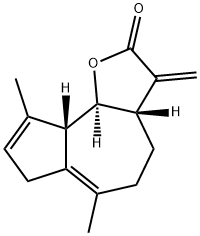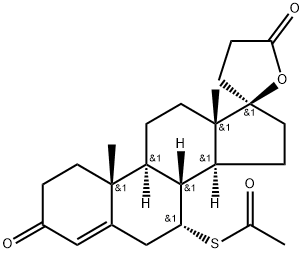Parthenolide , Analysis of standard products, ≥98% , 20554-84-1
Synonym(s):
Parthenolide, Tanacetum parthenium - CAS 20554-84-1 - Calbiochem
CAS NO.:20554-84-1
Empirical Formula: C15H20O3
Molecular Weight: 248.32
MDL number: MFCD00134592
EINECS: 692-532-0
| Pack Size | Price | Stock | Quantity |
| 20MG | RMB848.80 | In Stock |
|
| others | Enquire |
PRODUCT Properties
| Melting point: | 115-116 °C (lit.) |
| alpha | D20 -81.4° (c = 1.04 in chloroform); D22 -71.4° (c = 0.220 in CH2Cl2) |
| Boiling point: | 394.1±42.0 °C(Predicted) |
| Density | 1.13±0.1 g/cm3(Predicted) |
| storage temp. | -20°C |
| solubility | Soluble in DMSO (up to 100 mg/ml) or in Ethanol (up to 20 mg/ml) |
| form | White solid |
| color | White |
| Merck | 14,7048 |
| Stability: | Stable for 1 year from date of purchase as supplied. Solutions in DMSO or ethanol may be stored at -20° for up to 3 months. |
| InChI | InChI=1S/C15H20O3/c1-9-5-4-8-15(3)13(18-15)12-11(7-6-9)10(2)14(16)17-12/h5,11-13H,2,4,6-8H2,1,3H3/b9-5+/t11-,12-,13+,15+/m0/s1 |
| InChIKey | KTEXNACQROZXEV-PVLRGYAZSA-N |
| SMILES | O1C(=O)C(=C)[C@]2([H])CCC(C)=CCC[C@@]3(C)O[C@]3([H])[C@@]12[H] |t:10| |
| LogP | 2.424 (est) |
| CAS DataBase Reference | 20554-84-1 |
Description and Uses
(-)-Parthenolide (PTL) is a natural sesquiterpene lactone produced as a secondary metabolite by plants of the Asteraceae/ Compositae (daisies) and Magnoliaceae family (magnolias). It was first isolated from feverfew (Tanacetum parthenium L. Schulz Bip. or synonymously Chrysanthemum parthenium L. Bernh.). The plant owes its name to its use as a long known natural remedy for alleviating fever, migraine, rheumatoid arthritis, stomach ache, toothache, and insect bites, among other ailments. After it was shown that parthenolide is the main biologically active ingredient of these plant(s)1b, many studies have described promising anti-inflammatory and anti-tumour properties of the natural product. Interestingly, it was shown that PTL was cytotoxic to tumor cells while almost not affecting healthy cells at similar concentrations. Moreover, it was reported to be one of the few small molecules that selectively target cancer stem cells, which are still difficult to treat and a suspected reason for tumour relapse[6].
Antiinflammatory;MAP kinase inhibitor
Safety
| Symbol(GHS) |  GHS07 |
| Signal word | Warning |
| Hazard statements | H317 |
| Precautionary statements | P280-P302+P352 |
| Hazard Codes | Xi,C,F |
| Risk Statements | 11-34 |
| Safety Statements | 22-24/25-45-36/37/39-26-16 |
| WGK Germany | 3 |
| RTECS | LY4220000 |
| HS Code | 29322090 |




